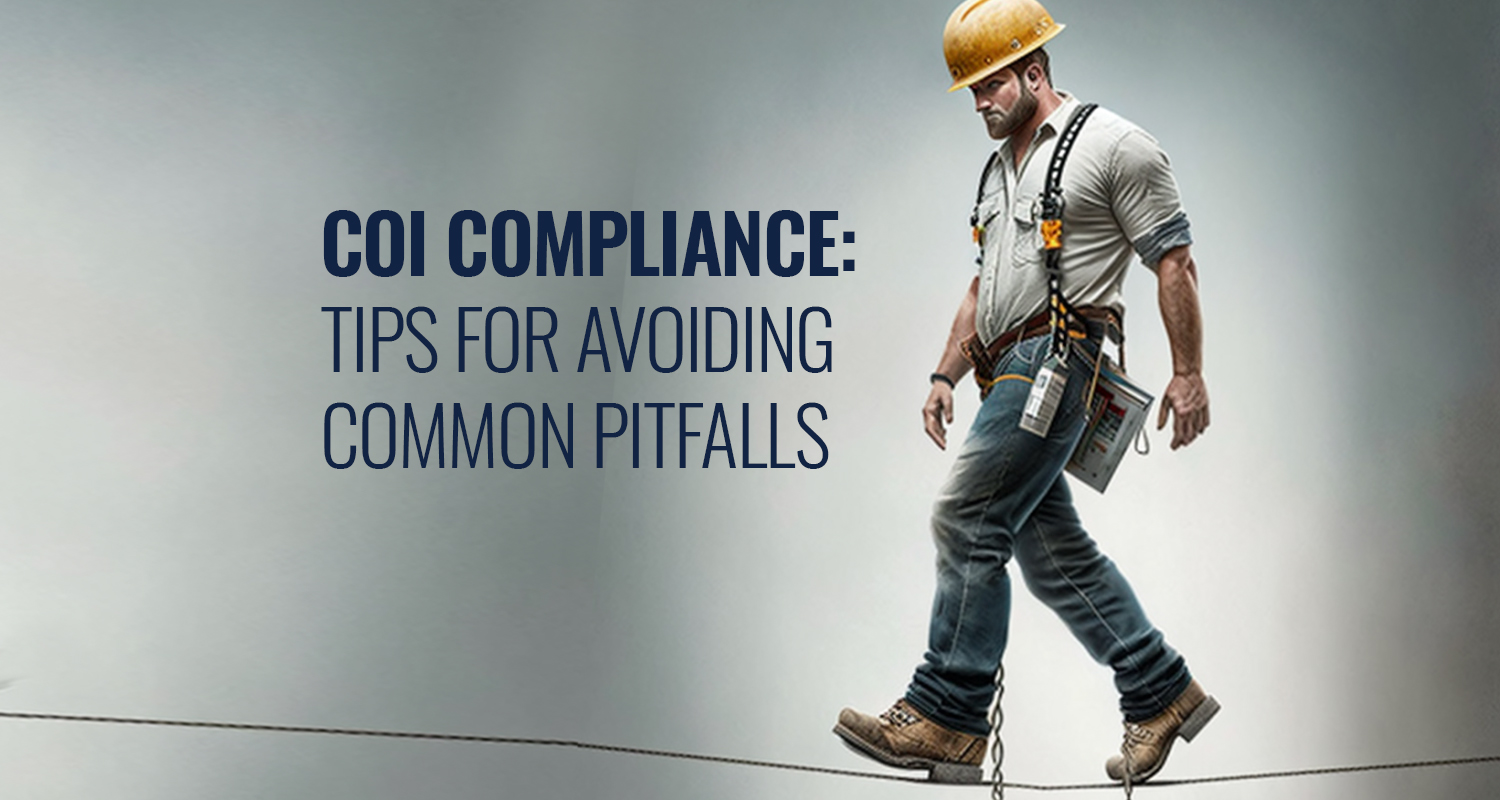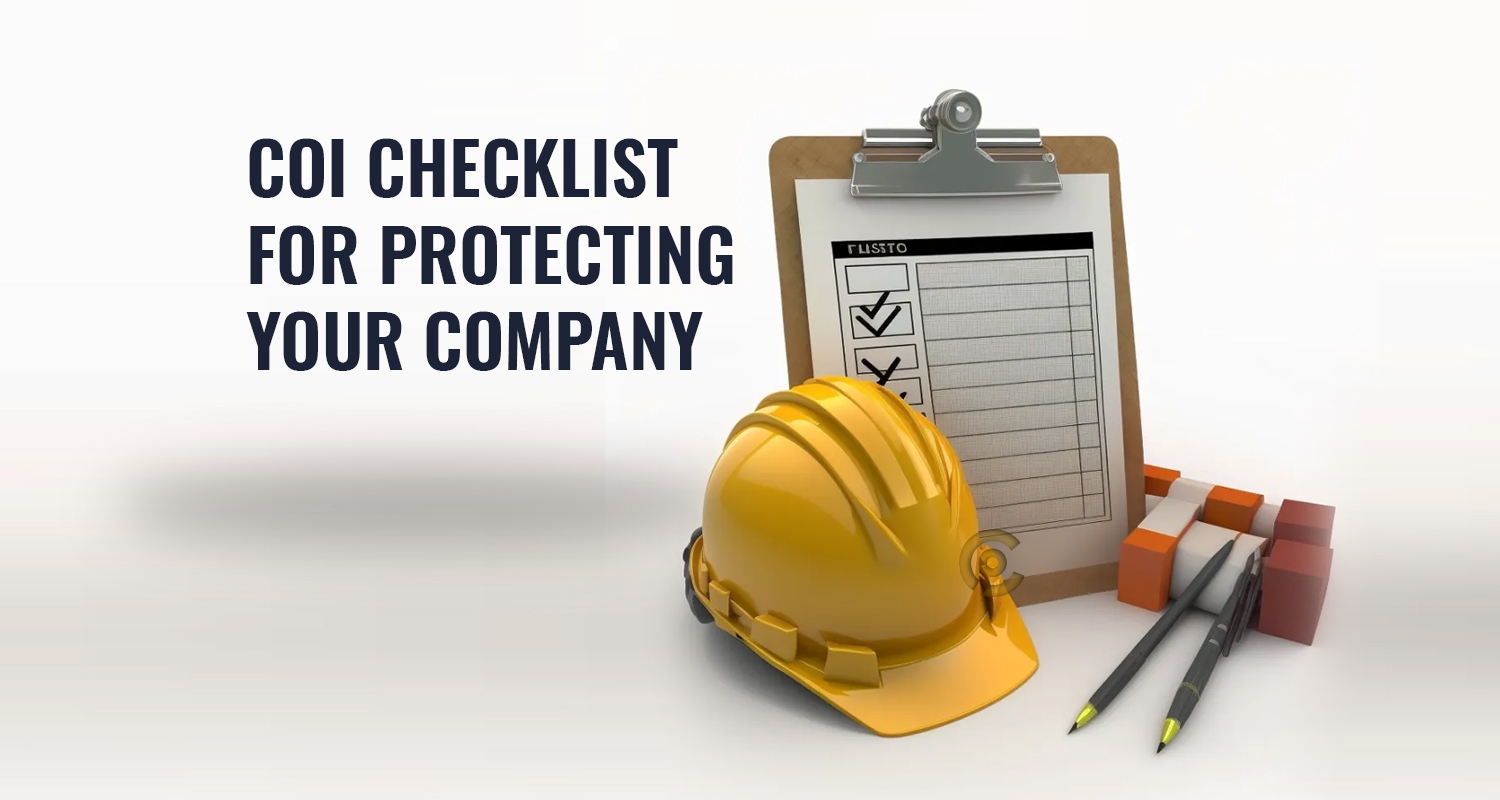COI Checklist for Protecting Your Company
Effective management of certificates of insurance (COIs) is a critical part of any comprehensive risk management plan for any operation, especially...
1 min read
Jerad Ferrell
:
May 1, 2023 2:59:17 PM

The construction industry is fraught with risks, and managing insurance compliance is an essential part of any project. Certificates of insurance (COIs) help construction risk leaders ensure that all subcontractors and partners meet the required insurance standards. However, COI management can be a complex task, and errors can lead to severe consequences. In this blog post, we'll explore common pitfalls and provide practical tips for avoiding them, ensuring a more efficient and effective COI management process.
One common pitfall is inadequate insurance coverage, where subcontractors or partners don't meet the minimum requirements. To avoid this issue, ensure that you thoroughly review COIs to verify coverage types and limits. Establish clear guidelines for your subcontractors and partners, and communicate these requirements effectively.
Expired COIs can put your projects at risk, exposing your company to potential liabilities. To prevent this, establish a system for tracking expiration dates and sending out renewal reminders. Additionally, consider implementing a COI management software solution that can automate this process, saving time and reducing the risk of human error.
Non-compliant endorsements are another common pitfall, where subcontractors and partners fail to provide the required additional insured endorsements. To avoid this, include specific endorsement requirements in your contracts and review COIs for compliance. If you identify non-compliant endorsements, request an updated COI and follow up until you receive the correct documentation.
Inconsistent tracking of COIs can lead to misplaced or outdated documents. To prevent this, implement a centralized system for storing and managing COIs. This can be a digital solution, such as COI management software, or a well-organized physical filing system. Ensure that all team members follow the same procedures when handling COIs.
Sub-tier contractors can pose significant risks if their insurance coverage isn't adequately managed. To mitigate this risk, require your subcontractors to provide COIs for their sub-tier contractors and verify that they meet your insurance requirements.
Different states may have unique insurance requirements, which can create complications for construction projects that span multiple locations. To avoid issues, familiarize yourself with state-specific requirements and ensure that all subcontractors and partners comply with the relevant regulations.
Managing COIs in the construction industry can be challenging, but by being aware of common pitfalls and implementing proactive measures, you can effectively mitigate risks and ensure your projects run smoothly. By adopting best practices and leveraging COI management software, you can streamline the process, save time, and protect your business from potential liabilities.

Effective management of certificates of insurance (COIs) is a critical part of any comprehensive risk management plan for any operation, especially...

Certificates of Insurance (COIs) play a critical role in managing risk and compliance in the construction industry. However, inadequate COI...

3 min read
General contractors (GCs) collect certificates of insurance (COIs) from each subcontractor during the procurement process. The COI briefly...